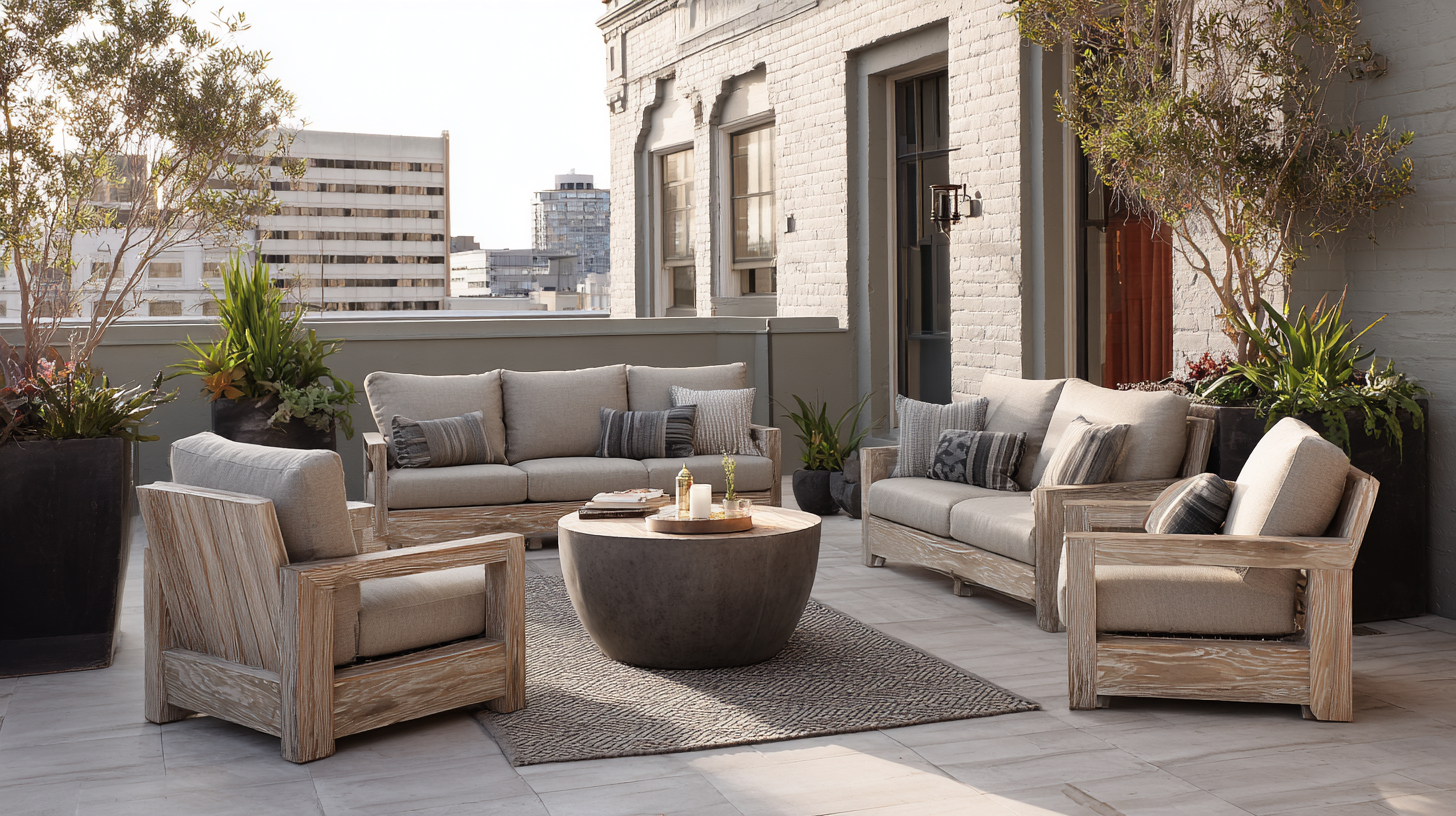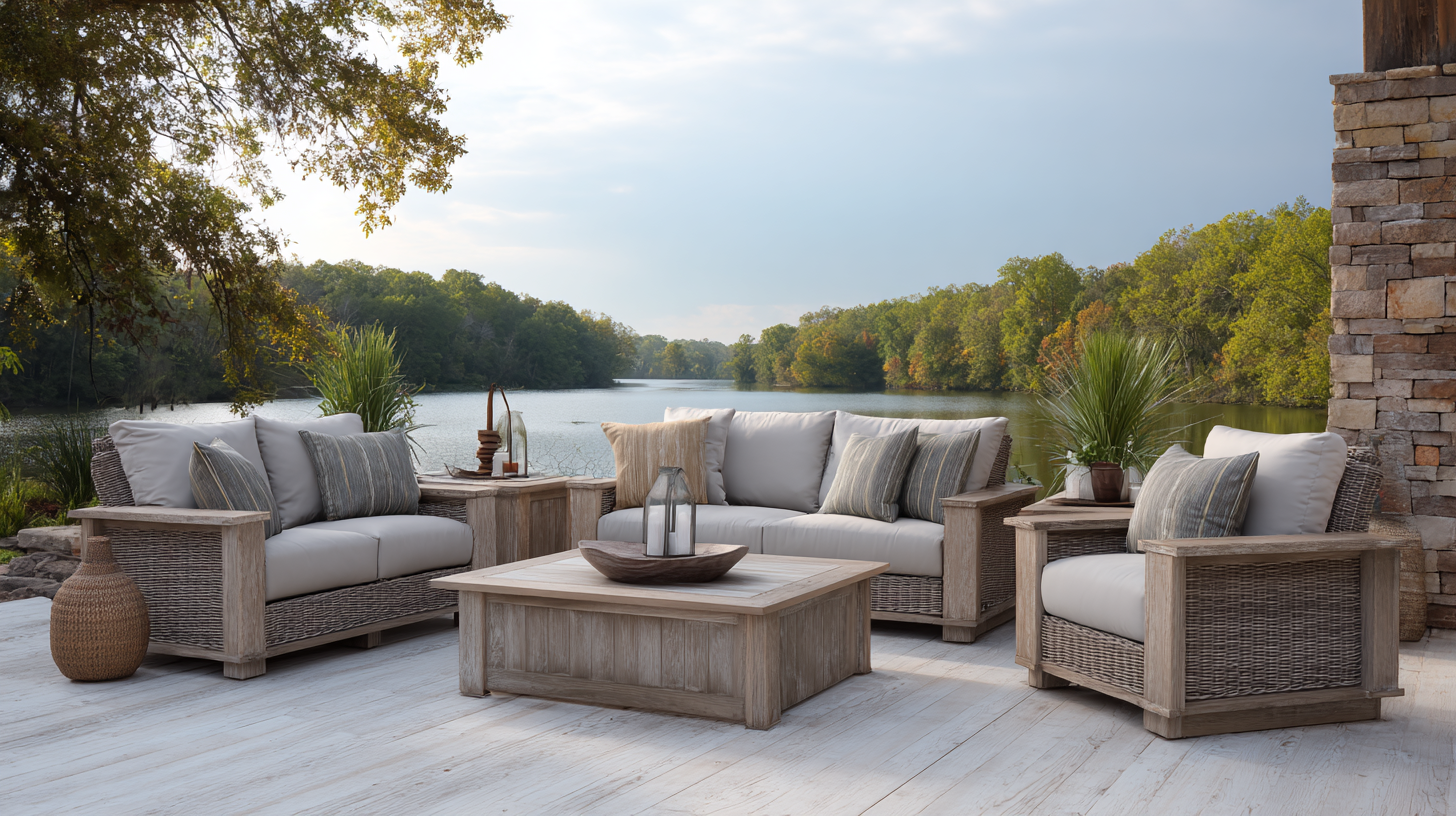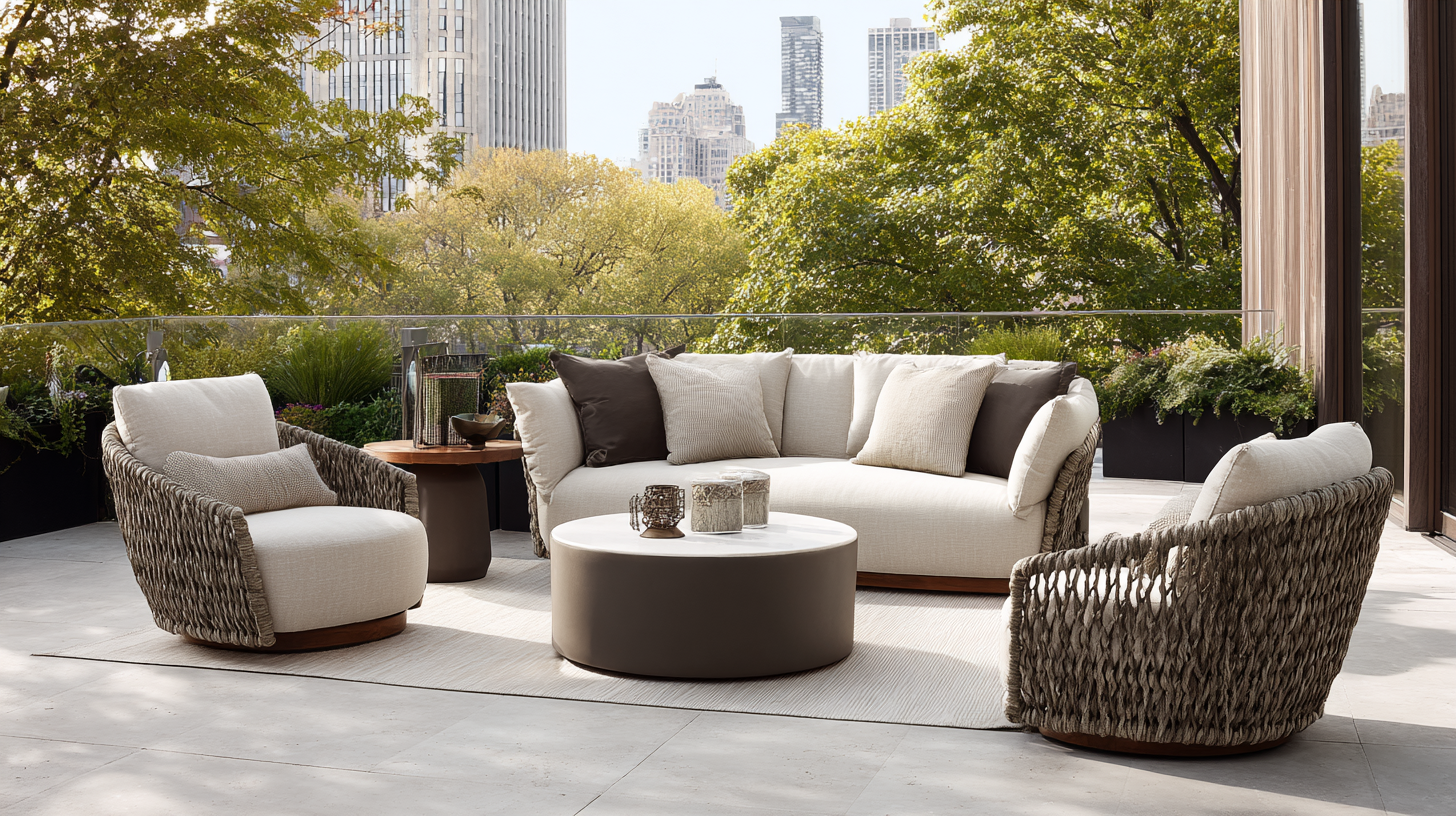How to Choose the Best Outdoor Seating Furniture for Your Space
When it comes to enhancing your outdoor living space, choosing the right Outdoor Seating Furniture is vital. According to a recent report by the American Society of Landscape Architects, outdoor seating areas have become increasingly popular, with 81% of respondents highlighting their importance for residential landscapes. The market for outdoor furniture is projected to grow at a CAGR of 4.5% from 2021 to 2028, driven by consumer demand for stylish and functional outdoor solutions. However, selecting the most suitable furniture involves considering various factors, including materials, design, and durability, to ensure it complements both your personal style and the climatic challenges of your location. This guide will provide you with detailed technical parameters and valuable insights to help you make an informed decision.

Identifying Your Outdoor Space: Key Measurements and Layout Considerations
When it comes to selecting outdoor seating furniture, understanding your space is crucial. First, measure your area accurately to ensure you maximize the use of available space. Start by noting the dimensions of your patio, balcony, or garden. This includes the length and width, as well as any obstacles like trees, steps, or existing structures that could impact your layout. Having these measurements on hand will help you visualize how different furniture pieces can fit together harmoniously.

Next, consider the layout and flow of your outdoor area. Think about how you want to use the space: do you envision a cozy nook for reading, a dining area for entertaining, or a larger seating arrangement for gatherings? Ensure there's enough room to walk comfortably around the furniture. It’s essential to create an inviting atmosphere while still allowing for easy movement. By thoughtfully assessing your outdoor space and planning the layout, you can choose the perfect seating furniture that complements your lifestyle and enhances your outdoor experience.
Assessing Material Durability: Choosing Furniture That Withstands the Elements
When selecting outdoor seating furniture, one of the most critical considerations is material durability. Outdoor furniture is constantly exposed to varying weather conditions, from harsh sunlight to heavy rain and snow. Therefore, choosing materials that can withstand these elements is essential in ensuring that your investment lasts for years. For instance, teak and eucalyptus are popular wood choices known for their natural resistance to moisture and decay, making them ideal for outdoor settings. Metals such as aluminum are also favored due to their lightweight nature and resistance to rust, especially when treated with protective finishes.
In addition to wood and metal, synthetic materials like resin wicker have gained popularity for their durability and low maintenance. This material not only resists fading from UV exposure but also remains unaffected by water or humidity, making it perfect for all climates. When assessing furniture options, be sure to check the manufacturer's specifications regarding weather resistance and warranties. By prioritizing material durability in your outdoor seating furniture selection, you can create a stylish and functional space that withstands the test of time and nature’s elements.
Optimal Comfort: Understanding Seating Height and Depth for Outdoor Use
When selecting outdoor seating furniture, understanding the optimal seating height and depth is crucial for ensuring comfort during long hours spent outside. According to a report by the American Society of Interior Designers, the ideal seat height for outdoor chairs typically ranges from 17 to 19 inches. This height accommodates a wide variety of users while allowing ease of transition from the chair to a standing position. Additionally, having a seat depth of approximately 18 to 22 inches provides sufficient room for lounging without sacrificing support, which is essential for better posture.
Furthermore, the ergonomics of outdoor seating cannot be overlooked. A study by the International Journal of Design indicates that furniture that promotes a slight recline can significantly enhance user comfort, reducing the risk of fatigue. Chairs with a backrest angle between 100 to 110 degrees encourage relaxation while offering adequate lumbar support. As consumers invest in their outdoor spaces, understanding these dimensions becomes paramount; choosing furniture that aligns with these ergonomic principles will ensure that gardens, patios, and balconies are as inviting and comfortable as possible.
Style and Aesthetics: Integrating Furniture with Your Overall Outdoor Design
When selecting outdoor seating furniture, integrating style and aesthetics into your overall outdoor design is essential. The current trend showcases furniture that enhances the inviting nature of outdoor spaces, featuring soft, rounded edges that promote relaxation and comfort. This design ethos aligns beautifully with the emerging outdoor living trends, emphasizing a seamless flow between interior and exterior environments. By choosing pieces that complement your landscape, you can create an area that is both functional and visually appealing.
In 2025, sustainability and innovative designs are at the forefront of outdoor furniture choices. Many brands are now focusing on eco-friendly materials and timeless designs that withstand the test of time and elements. Whether you prefer a budget-friendly option or a more premium style, there are numerous choices available that cater to diverse tastes and needs. This allows homeowners to curate spaces that reflect their personal aesthetics while ensuring a stylish, cohesive look throughout their outdoor areas.
How to Choose the Best Outdoor Seating Furniture for Your Space - Style and Aesthetics: Integrating Furniture with Your Overall Outdoor Design
| Furniture Type | Material | Style | Comfort Level | Recommended Space |
|---|---|---|---|---|
| Chairs | Metal | Modern | High | Small to Medium Patios |
| Sofas | Wood | Traditional | Medium | Large Decks |
| Dining Set | Synthetic Rattan | Contemporary | High | Outdoor Patios |
| Lounge Chairs | Aluminum | Minimalist | Very High | Poolside |
| Benches | Teak Wood | Rustic | Medium | Gardens |
Budget Planning: Understanding Costs and Value for Outdoor Furniture Investments
When considering outdoor seating furniture, budget planning is crucial for making an informed investment. According to a recent survey by the American Home Furnishings Alliance, nearly 70% of homeowners find comfort and durability as top priorities, with 60% willing to spend more on quality pieces that last longer. This emphasizes the importance of understanding both initial costs and long-term value when selecting furniture for your outdoor space.
Tips: Start by assessing your available space and creating a realistic budget. A well-planned budget should not only cover the purchase price but also consider potential maintenance costs, such as protective treatments and seasonal storage. Quality outdoor furniture can range from $200 to over $2,000, so prioritize pieces that offer both aesthetic appeal and weather resistance, as these will usually provide better value over time.
Additionally, investing in multi-functional furniture can help maximize your outdoor area while saving money. For example, a storage ottoman can serve as both seating and a place to store outdoor essentials, thus reducing the need to buy multiple items. According to the Outdoor Industry Association, choosing versatile options can save you up to 20% compared to purchasing separate, specialized furniture pieces.
